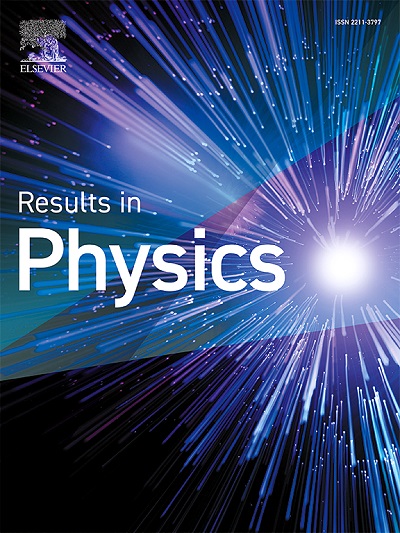Investigation of thermal and electrical properties of ternary composite nanofluids using MgO, ZnO, and MWCNT nanoparticles
IF 4.4
2区 物理与天体物理
Q2 MATERIALS SCIENCE, MULTIDISCIPLINARY
引用次数: 0
Abstract
Composites in nanofluids are currently being considered to improve thermal properties. This article uses a two-step technique to prepare a ternary composite nanofluid with a 0.10 vol% of H2O-based MgO, ZnO, and MWCNT nanoparticles at different weight ratios. Morphological surface and structure of nanocomposites were investigated using a high-resolution scanning electron microscope and XRD. The stability of the ternary composite nanofluid was determined through viscosity tests and visual inspection techniques, and the results showed that the nanofluids have good stability. Viscosity and electrical conductivity were evaluated and measured by a sine wave viscometer and conductivity meter of composite nanofluid at different temperatures, respectively. Both the electrical conductivity and viscosity of composite nanofluids were improved by increasing the mass ratio of MgO and ZnO particles. On the contrary, the viscosity of the ternary composite nanofluid decreases with increasing bath temperature. A maximum increase of 34.0 % and 907.4 % was obtained for the viscosity and electrical conductivity of the ternary composite nanofluid, respectively. The results show that the ternary composite nanofluid is found to have a reduced viscosity compared to the single nanofluid, which is a massive benefit for engineering applications.
求助全文
约1分钟内获得全文
求助全文
来源期刊

Results in Physics
MATERIALS SCIENCE, MULTIDISCIPLINARYPHYSIC-PHYSICS, MULTIDISCIPLINARY
CiteScore
8.70
自引率
9.40%
发文量
754
审稿时长
50 days
期刊介绍:
Results in Physics is an open access journal offering authors the opportunity to publish in all fundamental and interdisciplinary areas of physics, materials science, and applied physics. Papers of a theoretical, computational, and experimental nature are all welcome. Results in Physics accepts papers that are scientifically sound, technically correct and provide valuable new knowledge to the physics community. Topics such as three-dimensional flow and magnetohydrodynamics are not within the scope of Results in Physics.
Results in Physics welcomes three types of papers:
1. Full research papers
2. Microarticles: very short papers, no longer than two pages. They may consist of a single, but well-described piece of information, such as:
- Data and/or a plot plus a description
- Description of a new method or instrumentation
- Negative results
- Concept or design study
3. Letters to the Editor: Letters discussing a recent article published in Results in Physics are welcome. These are objective, constructive, or educational critiques of papers published in Results in Physics. Accepted letters will be sent to the author of the original paper for a response. Each letter and response is published together. Letters should be received within 8 weeks of the article''s publication. They should not exceed 750 words of text and 10 references.
 求助内容:
求助内容: 应助结果提醒方式:
应助结果提醒方式:


